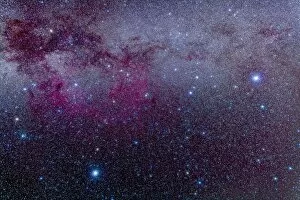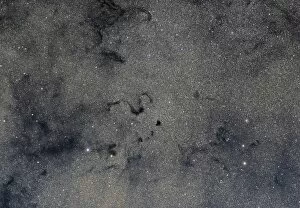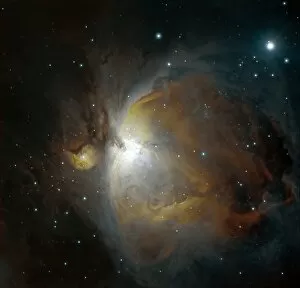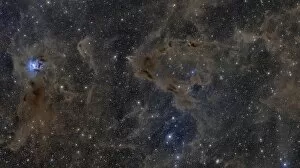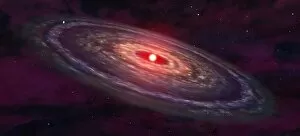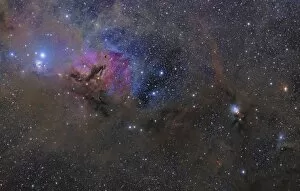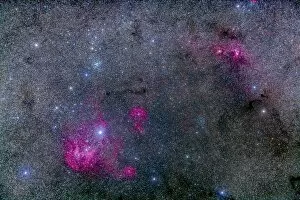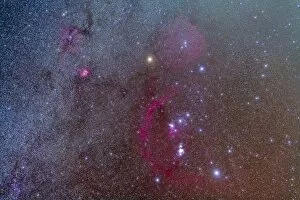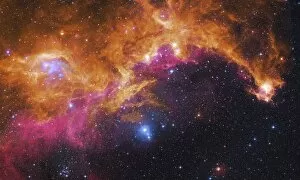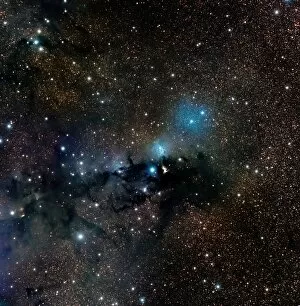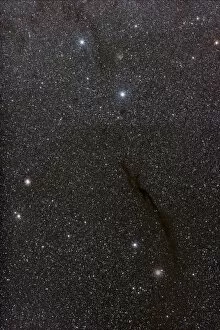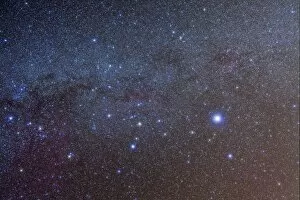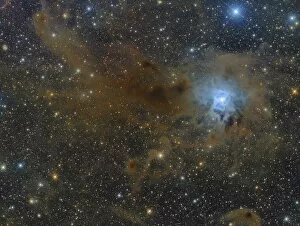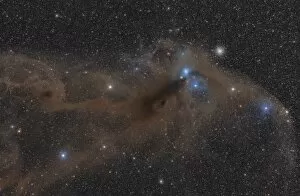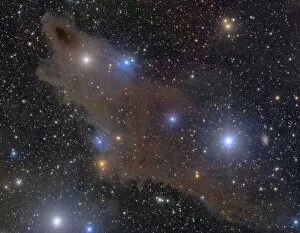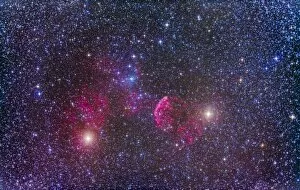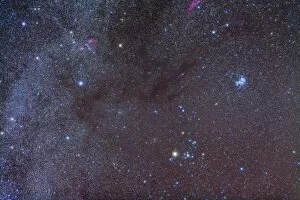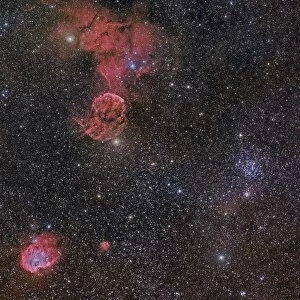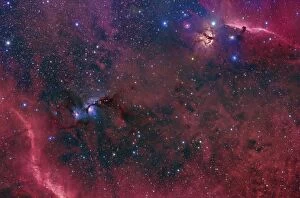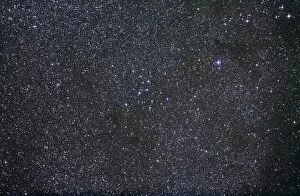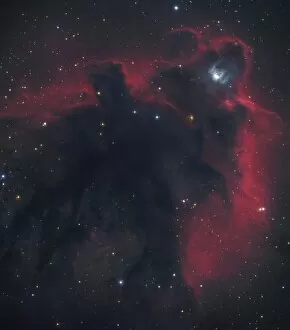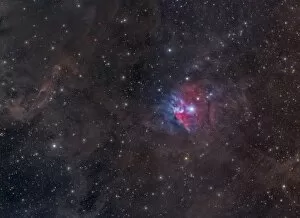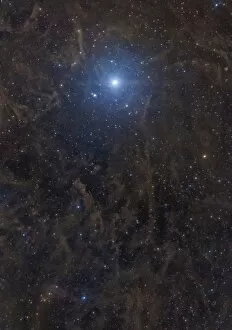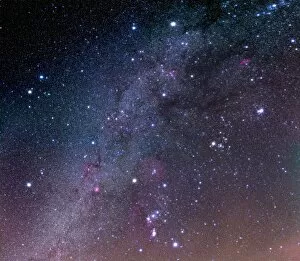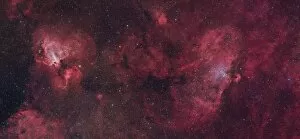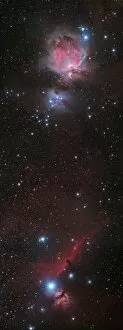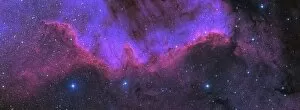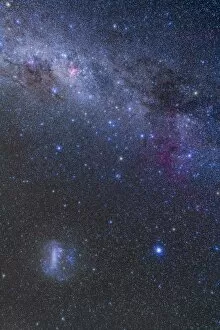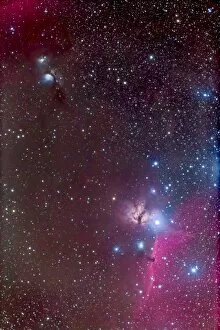Molecular Clouds Collection (#2)
Molecular clouds, the celestial wonders that captivate astronomers and stargazers alike, are vast regions of interstellar gas and dust where new stars are born
For sale as Licensed Images
Choose your image, Select your licence and Download the media
Molecular clouds, the celestial wonders that captivate astronomers and stargazers alike, are vast regions of interstellar gas and dust where new stars are born. These cosmic nurseries hold secrets to the formation of galaxies and offer glimpses into the mysteries of our universe. One such marvel is M16, also known as The Eagle Nebula in Serpens. This breathtaking cloud showcases towering pillars of gas and dust, famously dubbed the Pillars of Creation. Within these structures lie stellar nurseries where young stars emerge from their dusty cocoons. IC 2177, better known as the Seagull Nebula, presents a stunning display with its intricate patterns resembling a graceful bird in flight. Its ethereal beauty is matched only by its neighbor - The Horsehead Nebula in the constellation Orion. This dark silhouette against a backdrop of glowing gas serves as an iconic symbol for astronomy enthusiasts worldwide. In Auriga's starry expanse lies another spectacle - The Pinwheel Cluster and Starfish Cluster. These clusters sparkle with countless stars tightly bound together, creating mesmerizing patterns that leave us awestruck. Venturing deeper into space brings us to Vela supernova remnant at the heart of Gum Nebula area in Vela constellation. Remnants from ancient stellar explosions mingle with molecular clouds, painting a picture reminiscent of fireworks frozen in time. The Rosette Nebula enchants observers with its delicate petals formed by glowing hydrogen gas illuminated by nearby newborn stars. A widefield view reveals both Orion Nebula's radiant glow and Horsehead Nebula's enigmatic silhouette side by side – two contrasting yet harmonious celestial entities coexisting within one frame. Further exploration leads us to IC 1396 emission nebula complex – an expansive region brimming with vibrant colors emanating from ionized gases excited by massive hot stars residing within it. Cygnus constellation boasts The Pelican Nebula.

